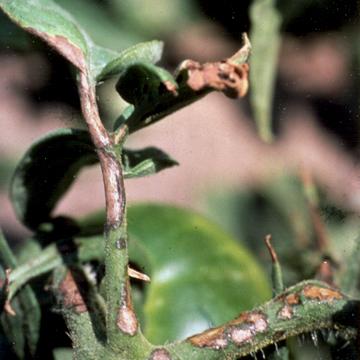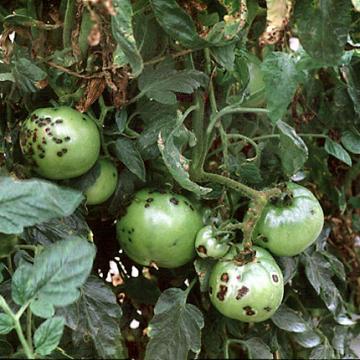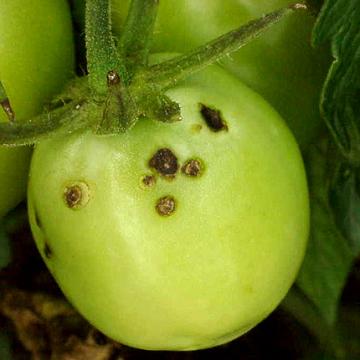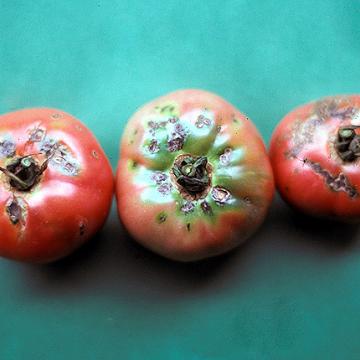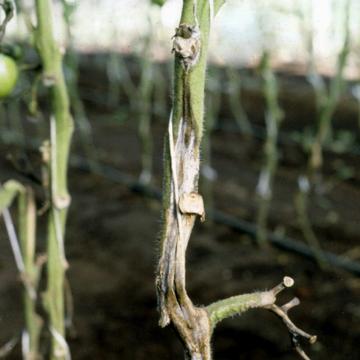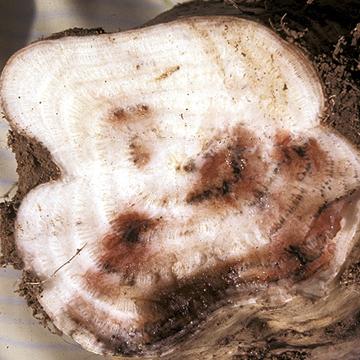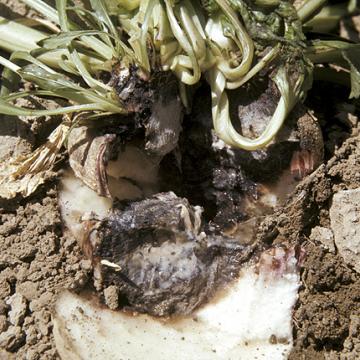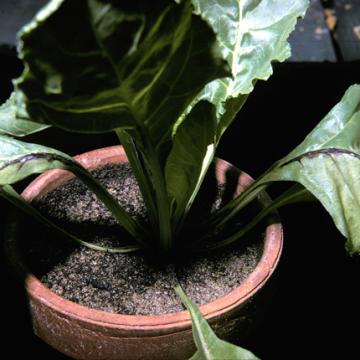DISEASE: Bacterial spot
HOST: Tomato
Necrotic lesions on stems and petioles. The bacterial spot xanthomonads are Xanthomonas euvesicatoria, X. vesicatoria, X. perforans, and X. gardneri. X. perforans is not known to infect fruit.
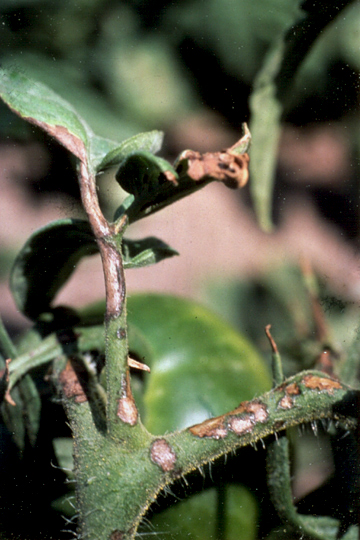
Bacterial spot | Tomato
DISEASE: Bacterial spot
HOST: Tomato (Lycopersicon esculentum)
PATHOGEN: Xanthomonas bacterial spot pathogens
PATHOGEN SYNONYM: Xanthomonas axonopodis pv. vesicatoria
SOURCE: B. S. Kim
DISEASE: Bacterial spot
HOST: Tomato
Severely infected fruit and leaves. The bacterial spot xanthomonads are Xanthomonas euvesicatoria, X. vesicatoria, X. perforans, and X. gardneri. X. perforans is not known to infect fruit.
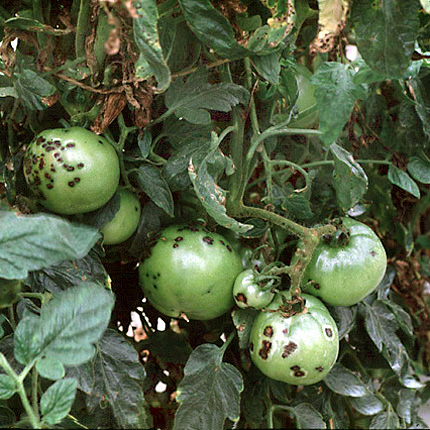
Bacterial spot | Tomato
DISEASE: Bacterial spot
HOST: Tomato (Lycopersicon esculentum)
PATHOGEN: Xanthomonas bacterial spot pathogens
PATHOGEN SYNONYM: Xanthomonas axonopodis pv. vesicatoria
SOURCE: J. Jones
DISEASE: Bacterial spot
HOST: Tomato
Green fruit with dark brown lesions. The bacterial spot xanthomonads are Xanthomonas euvesicatoria, X. vesicatoria, X. perforans, and X. gardneri. X. perforans is not known to infect fruit.
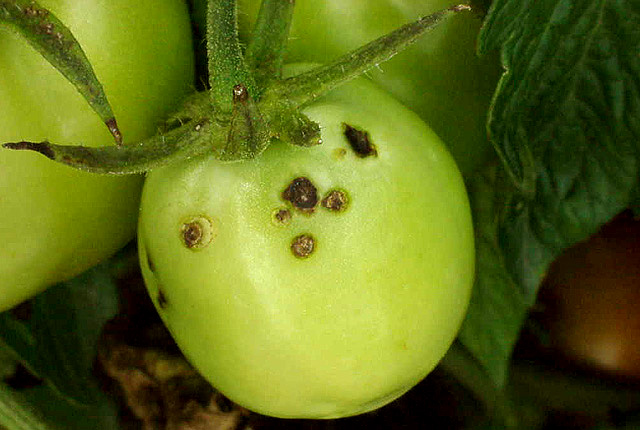
Bacterial spot | Tomato
DISEASE: Bacterial spot
HOST: Tomato (Lycopersicon esculentum)
PATHOGEN: Xanthomonas bacterial spot pathogens
PATHOGEN SYNONYM: Xanthomonas axonopodis pv. vesicatoria
SOURCE: S. Miller
DISEASE: Bacterial spot
HOST: Tomato
Ripe fruit with dark brown spots. The bacterial spot xanthomonads are Xanthomonas euvesicatoria, X. vesicatoria, X. perforans, and X. gardneri. X. perforans is not known to infect fruit.
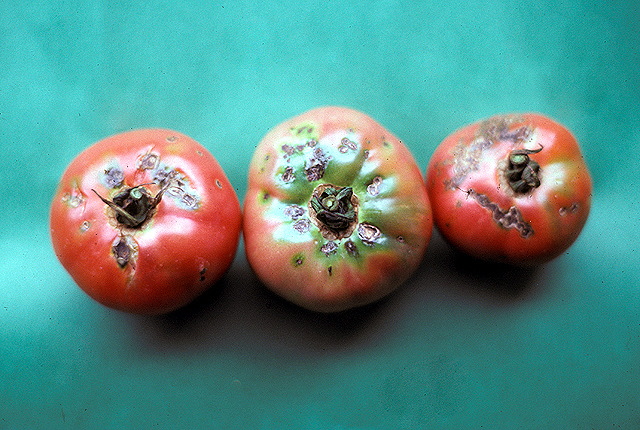
Bacterial spot | Tomato
DISEASE: Bacterial spot
HOST: Tomato (Lycopersicon esculentum)
PATHOGEN: Xanthomonas bacterial spot pathogens
PATHOGEN SYNONYM: Xanthomonas axonopodis pv. vesicatoria
SOURCE: M. Goto
DISEASE: Bacterial stem rot
HOST: Tomato
Stem with long necrotic lesions. The pathogen often enters plants following pruning injuries.
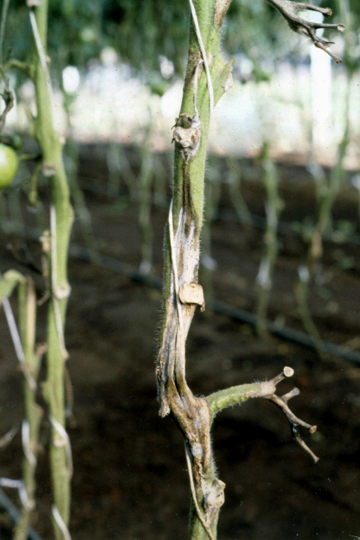
Bacterial stem rot | Tomato
DISEASE: Bacterial stem rot
HOST: Tomato (Lycopersicon esculentum)
PATHOGEN: Pectobacterium atrosepticum
PATHOGEN SYNONYM: Ewinia carotovora subsp. atroseptica
SOURCE: A. Alvarez
DISEASE: Bacterial stem rot
HOST: Tomato
Wilt is first symptom of disease. Later, the pith usually disintegrates, causing hollow and blackened stems.
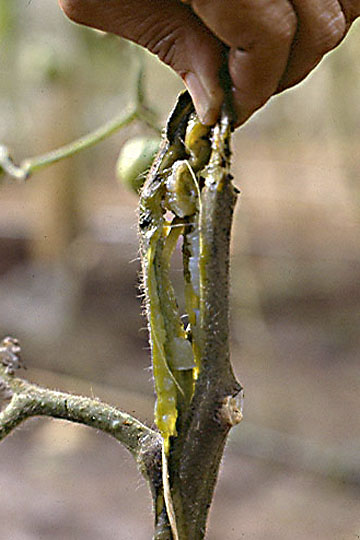
Bacterial stem rot | Tomato
DISEASE: Bacterial stem rot
HOST: Tomato (Lycopersicon esculentum)
PATHOGEN: Pectobacterium atrosepticum
PATHOGEN SYNONYM: Erwinia carotovora subsp. atroseptica
SOURCE: M. Stanghelllini
DISEASE: Bacterial vascular necrosis and rot
HOST: Beet
Cross section of sugar beet with reddish color in vascular bundles and adjacent tissues.
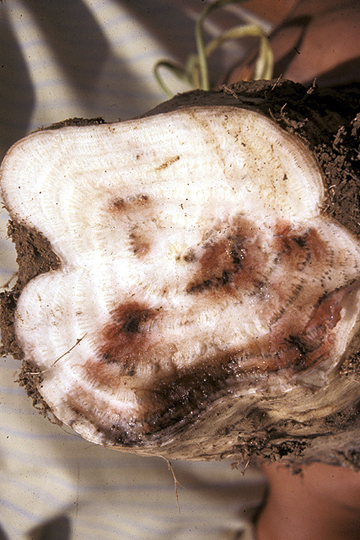
Bacterial vascular necrosis and rot | Beet
DISEASE: Bacterial vascular necrosis and rot
HOST: Beet (Beta vulgaris)
PATHOGEN: Pectobacterium betavasculorum
PATHOGEN SYNONYM: Erwinia carotovora subsp. betavasculorum
SOURCE: M. Schroth
DISEASE: Bacterial vascular necrosis and rot
HOST: Beet
Advanced stage of disease with extensive rot.
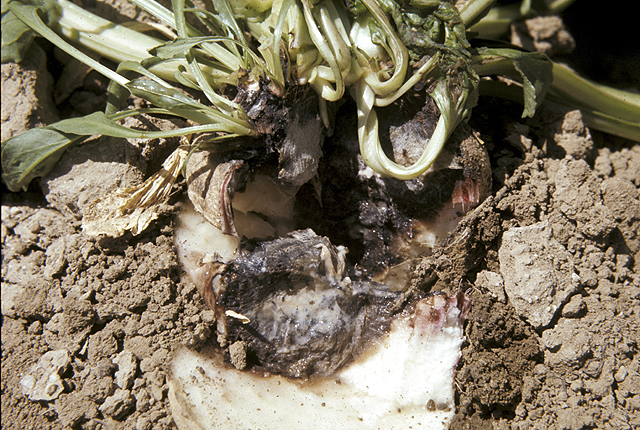
Bacterial vascular necrosis and rot | Beet
DISEASE: Bacterial vascular necrosis and rot
HOST: Beet (Beta vulgaris)
PATHOGEN: Pectobacterium betavasculorum
PATHOGEN SYNONYM: Erwinia carotovora subsp. betavasculorum
SOURCE: M. Schroth
DISEASE: Bacterial vascular necrosis and rot
HOST: Beet
Early stage of systemic infection of young plant noted by blackening of midribs and veins.
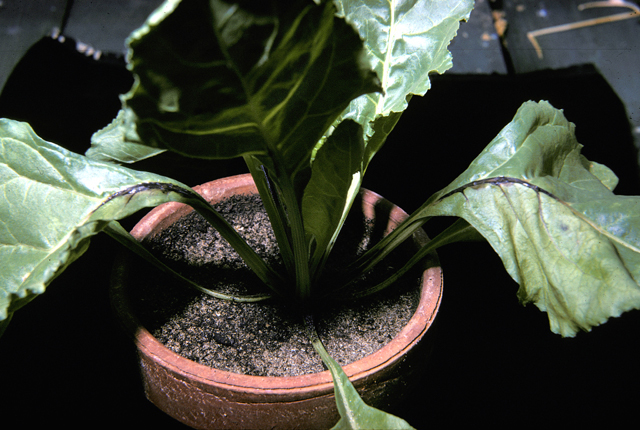
Bacterial vascular necrosis and rot | Beet
DISEASE: Bacterial vascular necrosis and rot
HOST: Beet (Beta vulgaris)
PATHOGEN: Pectobacterium betavasculorum
PATHOGEN SYNONYM: Erwinia carotovora subsp. betavasculorum
SOURCE: M. Schroth


